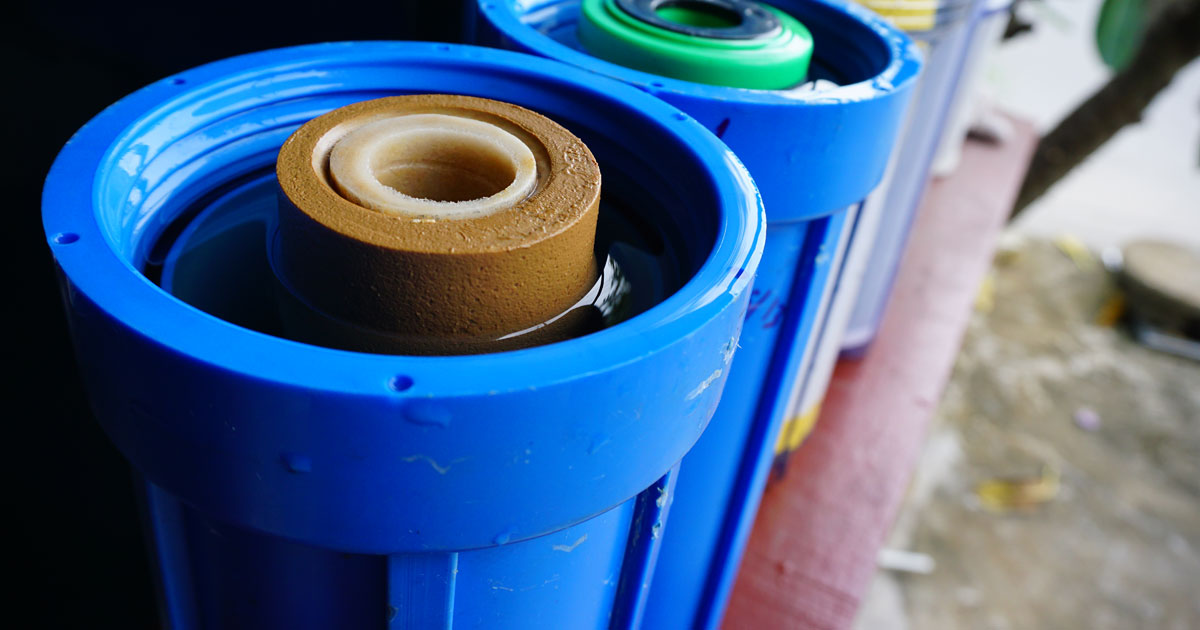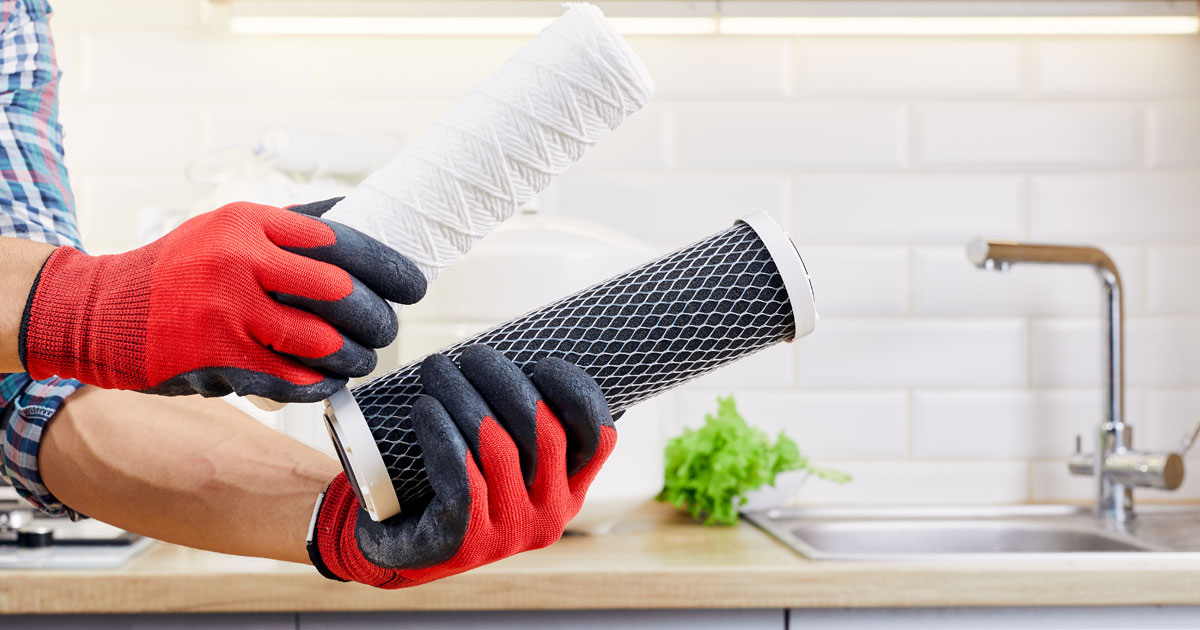Whole House Water Filter Sequencing: Choose, Change, and Maintain Your System
 Andrew
November 26, 2025
#3-stage
#howtofilter
#sequence
#wholehome
#whole-house-filter
Andrew
November 26, 2025
#3-stage
#howtofilter
#sequence
#wholehome
#whole-house-filter

- Explain the proper sequence for multi-stage water filter systems and why order matters
- Help you choose the right whole house filter configuration for your water source
- Walk through when and how to change cartridge filters for optimal performance
- Share maintenance tips that extend filter life and protect your investment
Selecting the right whole house filter starts with understanding your water source and its specific challenges. Municipal water users typically need chlorine and chloramine reduction, while well water often requires sediment removal, iron treatment, and sometimes bacterial control. Start by reviewing your water quality report (available annually from municipal suppliers) or scheduling comprehensive well water testing to identify what actually needs filtering, not what marketers claim you need.
The 3-stage water filter sequence has become popular for good reason: it provides excellent filtration coverage while remaining maintainable by homeowners. These housing systems often come pre-mounted on brackets with basic installation parts, making setup easier and manageable for experienced DIYers with proper tools or a quick job for professionals. More importantly, the cartridge design means you can maintain them yourself, even swapping filter types if your water quality changes or by simply replacing them on schedule. This flexibility makes bulk purchasing especially attractive. You'll save money over time and always have fresh filters handy to avoid going out into that 100-year storm to the hardware store when a filter emergency strikes.
What Water Filter Goes First? Understanding Proper Sequencing
What order should water filters be installed? Almost always, work from coarse to fine filtration and think of filters in a sequence both for their dedicated function and as a pre-filter for the next filter. A properly sequenced system protects downstream filters while ensuring each stage operates efficiently:
- Stage One: Sediment filters handle sand, silt, rust, and other larger particles that would quickly clog finer filters, typically ranging from 1 to 50 microns with 10-20 microns being most common for residential use. Dual gradient filters offer an excellent stage one option, capturing large to small particles progressively to maintain water flow before finer carbon filtration. ("Progressive" filtration matters in this first stage. For many residential systems, starting with too low a micron rating would be bad for flow rate and water pressure.)
- Stage Two: Carbon filters come second to remove chlorine, chemicals, and improve overall water aesthetics of taste and odor, with granular activated carbon typically filtering around 20-25 microns, carbon block offering 0.5-10 micron, and catalytic often rated at 1 micron.
- Stage Three: Specialized treatment targets specific water problems such as iron reduction, descaler cartridges for hard water minerals (where flow rate matters more than micron rating), or other treatment based on your test results. Another option is choosing to use two carbon filters, such as granular activated carbon in stage two and a finer 0.5-10 micron carbon block in stage three, depending on water contaminants and flow rate needs.
For well water systems requiring disinfection, UV lights install after all filtration stages. Clear water maximizes UV effectiveness, since sediment and minerals can shield bacteria from the light's sanitizing power.
Advanced Options: Knowing When Cartridges Aren't Enough
Severe iron bacteria might need chlorination and specialized iron filters. Certain heavy metals—or even levels of heavy metals—require specific absorption media or media volume. High-flow applications might demand large carbon tanks with KDF media. It's a balancing act for consumers: be skeptical of companies pushing expensive, complex systems for standard water problems, but also be suspicious of claims that sound too good to be true. For example, carbon media is known to reduce some quantities and types of heavy metals and PFAS, but small cartridges will quickly get overwhelmed by high levels and are not capable of reducing certain heavy metals, let alone removing them.
Most homes on municipal water, however, do fine with properly sequenced cartridge filters. The key is accurate reporting or water testing to identify real issues versus manufactured concerns. Over-filtration wastes money and can actually create problems, like stripping beneficial minerals or creating bacterial growth points in unnecessary equipment.

Knowing when to replace filters prevents both water quality problems and unnecessary expense. Sediment filters typically last 3–6 months depending on water quality. Well water with heavy particulates might require monthly changes, while clean municipal water could stretch to 9 months. Carbon filters generally need replacement every 6–12 months regardless of appearance, as their chemical absorption capacity depletes even if they look clean.
Practical Replacement Indicators
Watch for decreased water pressure at fixtures, signaling filter clogging. Sediment filters show visible dirt accumulation, and some pleated polyester styles can be gently rinsed and reused a time or two before disposal. Carbon filters suggest they're exhausted when they're clearly tired of working and chlorine taste or odor returns.
Set calendar reminders based on your specific situation. A family of four on sediment-heavy well water might change sediment filters monthly or more to keep their carbon filters cleaner longer. That same family on clean municipal water will likely stick to standard intervals recommended by the manufacturer. During your first year, track filter condition regularly to establish optimal replacement timing for your unique water conditions.
In short, avoid using filters past their capacity. Worn down and exhausted filters can release trapped contaminants back into your water. When in doubt, replace filters slightly early rather than late.

Changing cartridge filters requires no special skills—manufacturers designed these systems for homeowner maintenance. Before starting, ensure replacement filters are ready. This prevents extended water outages and those frantic hardware store runs.
Step-by-Step Filter Replacement
- Turn off water supply at main valve or use bypass if installed
- Release pressure by opening a downstream faucet or pressing pressure-release button on housing cap if available
- Place bucket under first filter housing
- Unscrew housing using provided wrench (turn counterclockwise, or "lefty-loosey" for most standard threads)
- Remove old cartridge and inspect for unusual wear patterns
- Clean housing with dish soap, checking O-ring condition
- Install new cartridge ensuring correct orientation if marked
- Hand-tighten housing plus quarter-turn with wrench—over-tightening damages O-rings
- Repeat sequence for each subsequent stage
- Slowly open water supply checking for leaks
- Flush system for 5 minutes, clearing carbon fines and manufacturing residue
Always change filters in order. Disturbing upstream filters releases trapped particles that downstream filters must catch. Mark installation dates directly on housings with a Sharpie for easy tracking.
Remembering the Big Picture
Filter sequencing principles apply throughout water treatment. Under-sink reverse osmosis systems follow the same logic: sediment and carbon pre-filters protect the delicate, expensive RO membrane. Understanding this almost universal sequencing concept helps you maintain any filtration system properly. The ideal home setup combines whole house filtration removing sediment and chemicals that affect everything from showering to laundry, with point-of-use reverse osmosis providing exceptional drinking water. This dual approach maximizes protection while using each technology where it excels.
Proper filter sequencing isn't complicated once you understand the simple principle: coarse to fine. Whether protecting your home from sediment-laden well water or removing municipal treatment chemicals, correct filter order ensures each stage works efficiently, lasts longer, and costs less to maintain. Regular replacement following these guidelines keeps your water clean and your system running smoothly for years.






